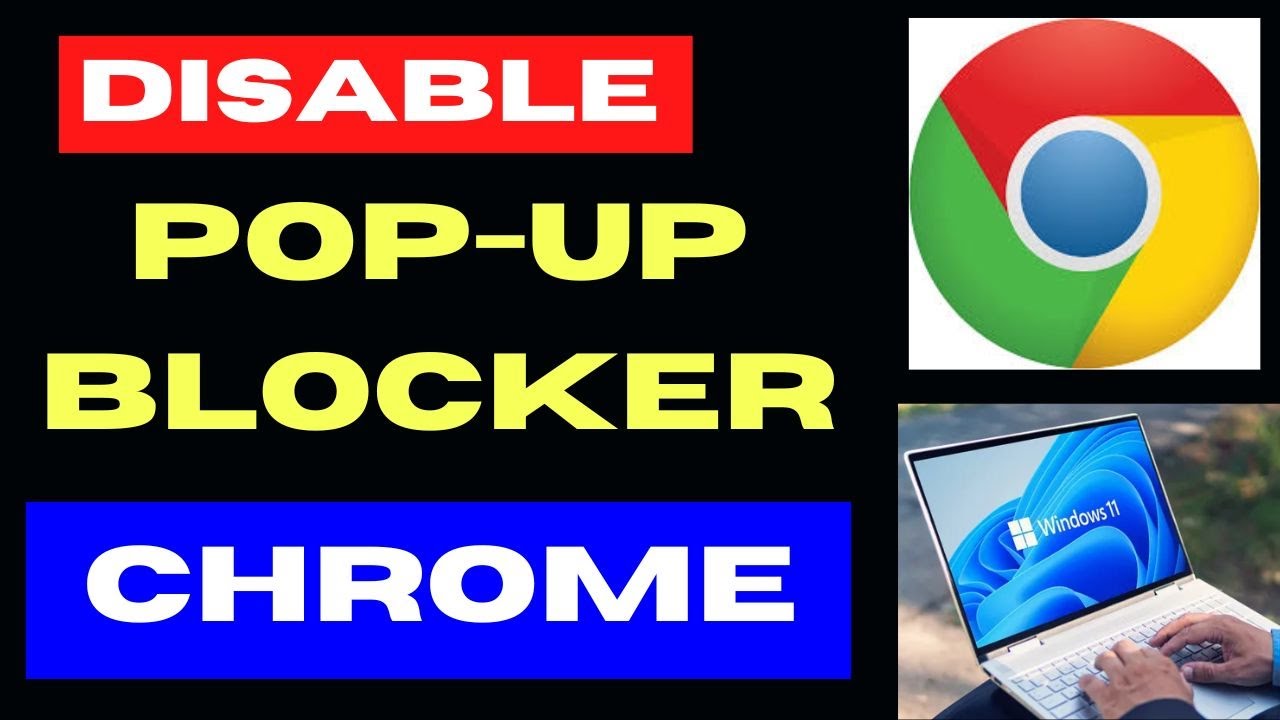
Mastering Chrome’s Pop-up Blockers: A Comprehensive Guide
Pop-ups – those often intrusive windows that appear unexpectedly while browsing the internet – have been a long-standing source of frustration for users. Thankfully, modern web browsers like Google Chrome offer robust built-in features to manage and block these interruptions. This article provides a comprehensive guide to understanding and effectively utilizing Chrome’s pop-up blockers, ensuring a smoother and more secure browsing experience. We’ll delve into how these blockers work, customization options, troubleshooting common issues, and best practices for managing website exceptions.
Understanding Pop-up Blockers
A pop-up blocker is a software feature designed to prevent unwanted windows from automatically opening in a web browser. These windows, often containing advertisements or malicious content, can disrupt the user’s workflow and potentially expose them to security risks. Chrome’s built-in pop-up blocker is a proactive defense mechanism that automatically detects and suppresses most unwanted pop-ups, contributing to a cleaner and more focused online experience.
Enabling and Disabling Chrome’s Pop-up Blocker
By default, Chrome’s pop-up blocker is enabled. However, users may occasionally need to disable it temporarily for specific websites or re-enable it if it has been accidentally turned off. Here’s how to manage this setting:
Accessing Chrome’s Settings
- Open Google Chrome.
- Click on the three vertical dots (the ‘Customize and control Google Chrome’ menu) in the top right corner of the browser window.
- Select ‘Settings’ from the dropdown menu.
Navigating to Privacy and Security
- In the Settings menu, click on ‘Privacy and security’ in the left-hand sidebar.
- Click on ‘Site settings’.
Managing Pop-ups and Redirects
- Scroll down to the ‘Content’ section and click on ‘Pop-ups and redirects’.
- Here, you’ll find the option to either ‘Allowed’ or ‘Blocked’. The default setting is ‘Blocked (recommended)’.
- To disable the pop-up blocker, select ‘Allowed’. To enable it, select ‘Blocked (recommended)’.
Customizing Pop-up Blocker Settings: Allowing Exceptions
While blocking all pop-ups is generally desirable, some websites legitimately use pop-ups for essential functions, such as displaying login windows or processing transactions. Chrome allows users to create exceptions for these trusted websites. Here’s how:
Adding Allowed Sites
- In the ‘Pop-ups and redirects’ settings (as described above), locate the ‘Allowed to send pop-ups and use redirects’ section.
- Click the ‘Add’ button next to this section.
- Enter the URL of the website you want to allow pop-ups from (e.g., www.example.com) and click ‘Add’.
Removing Allowed Sites
- In the ‘Allowed to send pop-ups and use redirects’ section, hover over the website you want to remove from the exception list.
- Click on the three vertical dots that appear next to the website.
- Select ‘Remove’ from the dropdown menu.
Troubleshooting Common Issues with Pop-up Blockers
Sometimes, Chrome’s pop-up blocker may interfere with legitimate website functionalities or fail to block all unwanted pop-ups. Here are some common issues and their solutions:
Website Functionality Issues
If a website is not functioning correctly, and you suspect the pop-up blocker is the cause, try temporarily allowing pop-ups for that specific site. If the issue resolves, you’ve identified the culprit. Remember to re-enable the pop-up blocker after you’ve finished using the website.
Pop-ups Still Appearing
If you’re still seeing pop-ups despite having the pop-up blocker enabled, it could be due to several reasons:
- Malware or Adware: Your computer may be infected with malware or adware that is generating the pop-ups. Run a thorough scan with a reputable antivirus program.
- Notifications: Some websites use browser notifications, which can resemble pop-ups. You can manage your notification settings in Chrome’s ‘Notifications’ section within ‘Site settings’.
- Hidden Pop-unders: These are pop-ups that appear behind the current browser window. Chrome’s pop-up blocker may not always catch these. Consider using an ad blocker extension for added protection.
- Misleading Links: Some websites use links that appear to be internal but actually open new windows. Chrome treats these as user-initiated actions and may not block them.
Best Practices for Managing Pop-up Blockers
To maximize the effectiveness of Chrome’s pop-up blocker and maintain a secure browsing experience, consider these best practices:
- Keep Chrome Updated: Regularly update Chrome to the latest version to ensure you have the most recent security patches and pop-up blocker improvements.
- Use a Reputable Ad Blocker: Consider using a reputable ad blocker extension in addition to Chrome’s built-in pop-up blocker for enhanced protection against intrusive ads and pop-ups.
- Be Cautious of Suspicious Websites: Avoid visiting websites with a poor reputation or those that engage in suspicious behavior, as they are more likely to contain malicious pop-ups.
- Regularly Scan for Malware: Perform regular scans with a reputable antivirus program to detect and remove any malware or adware that may be generating unwanted pop-ups.
- Review Allowed Sites Periodically: Periodically review the list of websites you’ve allowed pop-ups from and remove any that are no longer trusted or necessary.
The Future of Pop-up Blocking
As web technologies evolve, so too do the methods used to deliver unwanted advertisements and content. Browser developers are constantly working to improve pop-up blockers and other security features to stay ahead of these evolving threats. Future iterations of Chrome’s pop-up blocker may incorporate more sophisticated algorithms to detect and block even the most evasive pop-ups, providing users with an even more seamless and secure browsing experience. [See also: Ad Blocker Extensions for Chrome].
Conclusion
Chrome’s built-in pop-up blocker is a valuable tool for enhancing the browsing experience and protecting against potentially harmful content. By understanding how the pop-up blocker works, customizing its settings, and following best practices, users can effectively manage unwanted pop-ups and enjoy a cleaner, more secure, and more productive online experience. Taking the time to configure and maintain your pop-up blocker is an investment in your online safety and well-being. Remember to regularly review your settings and stay informed about the latest threats to ensure you’re always one step ahead.
In summary, mastering the use of Chrome’s pop-up blockers involves understanding its functionality, properly configuring its settings to allow exceptions when necessary, troubleshooting any problems that may arise, and adhering to best practices for a secure and efficient browsing experience. The consistent use of this feature, combined with other security measures, will help you navigate the internet with confidence and peace of mind. The pop-up blocker is an essential component of a safe online presence, and understanding its nuances will empower you to take control of your browsing environment.

